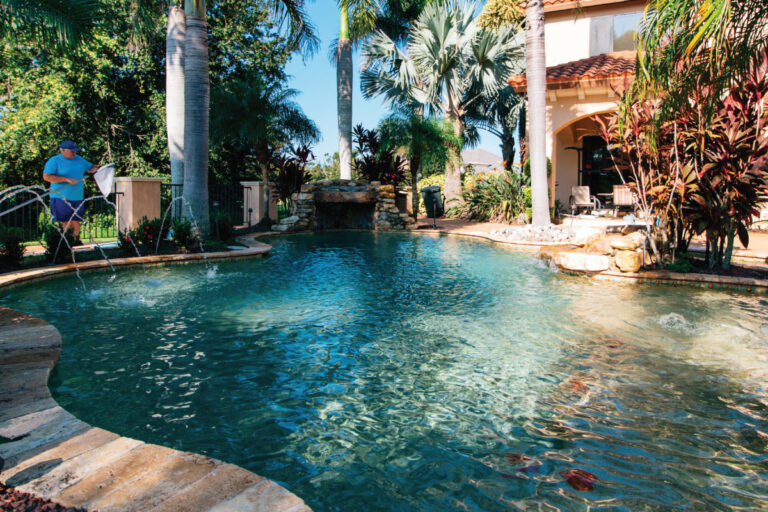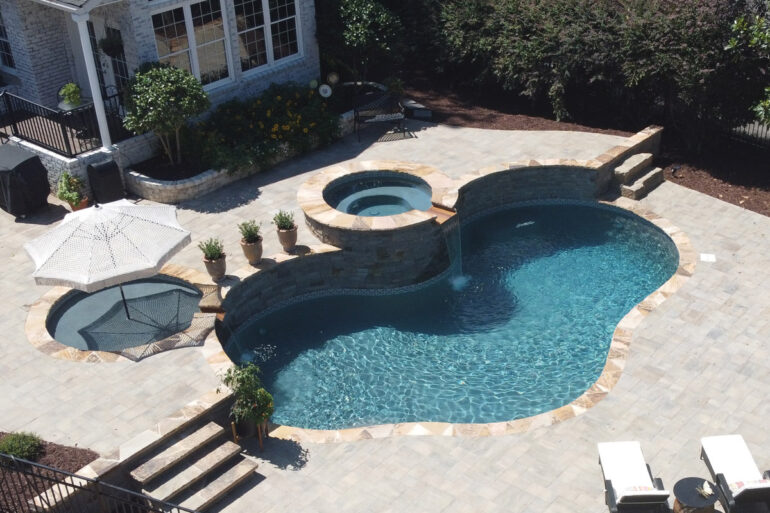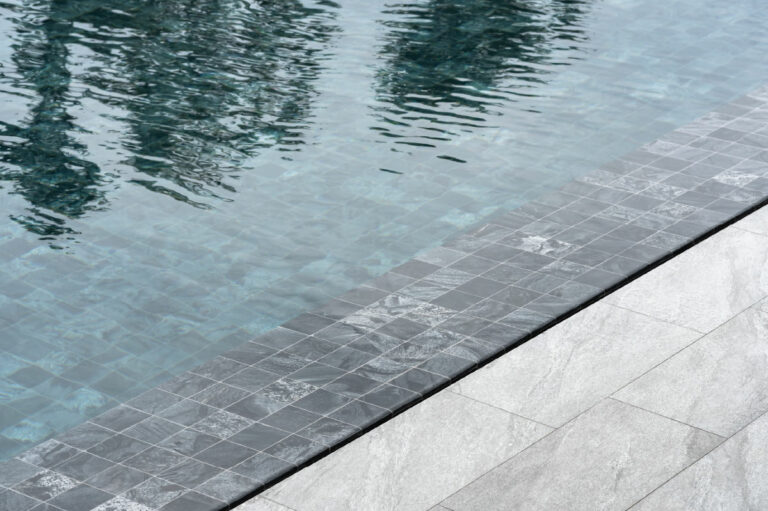A Whole New Light
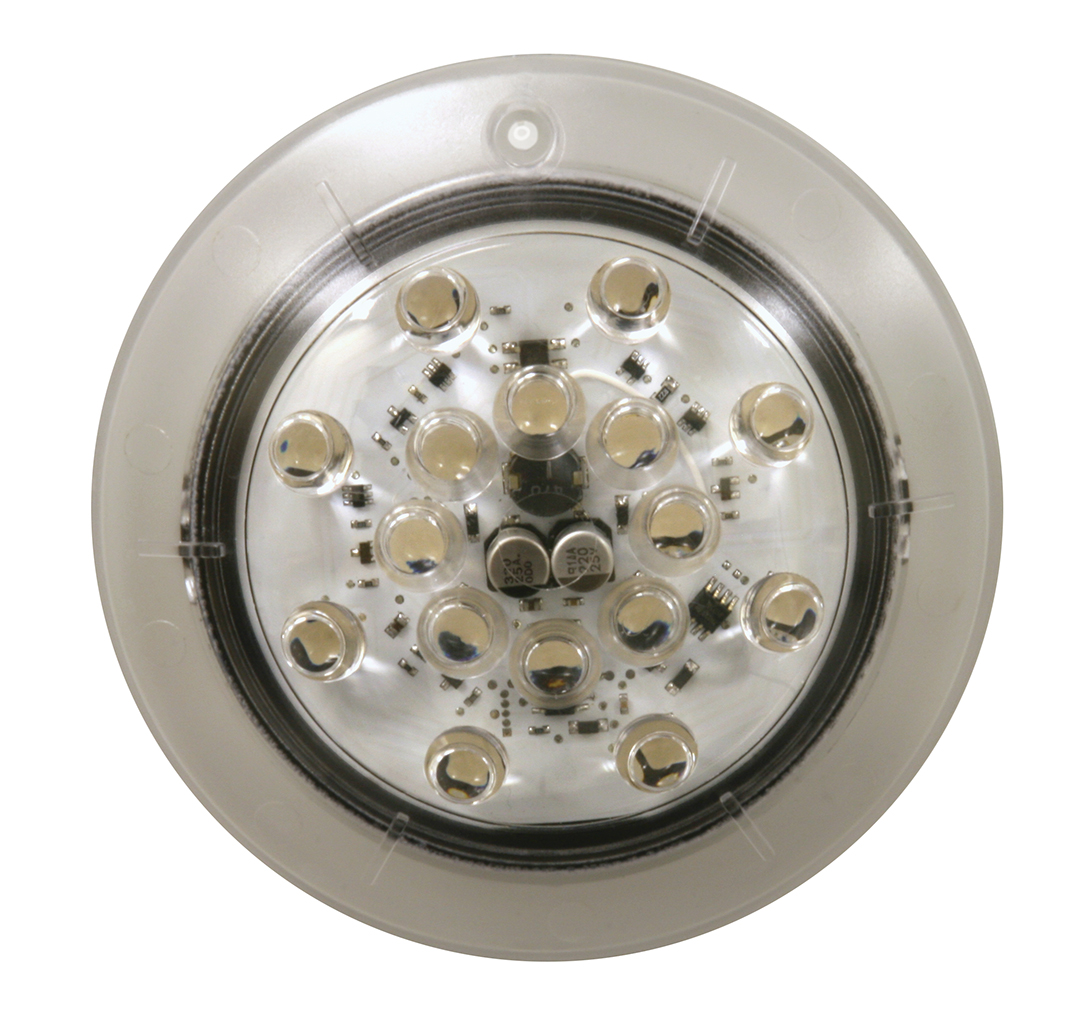
For decades, the only way for most people to light their pools at night has been to use one or two large, bright niche lights. They are usually placed under the diving board or in a spot that won’t shine back at the house.
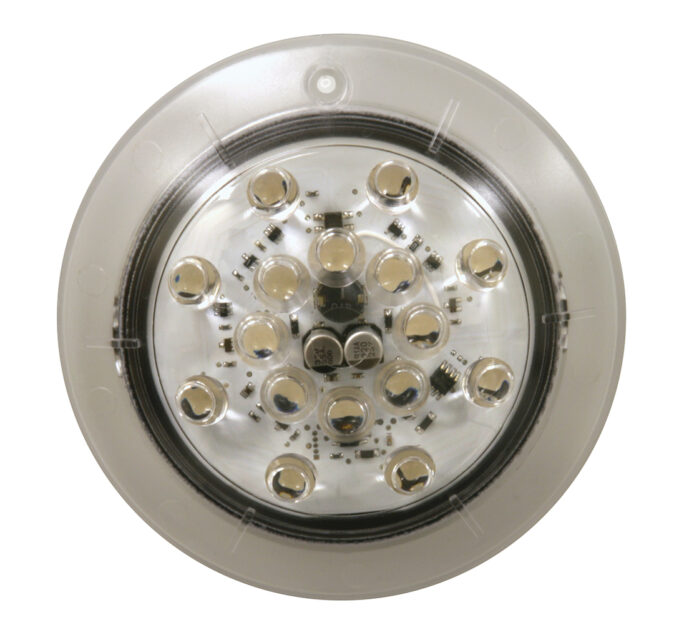
And while improvements have been made on that light, a new trend has emerged to get rid of it altogether and replace it with smaller, LED lights called nicheless lights. These lights can be put in the niche already there, and many builders have begun to add several niches around a new pool so owners can enjoy much more light.
Even though typical LED lamps produce fewer lumens, the nicheless light systems often appear brighter. Many nicheless lights can be placed just four inches from the waterline, lighting the area over and around the pool, too. “At the end of the day, it’s about the complete backyard experience,” says Greg Fournier, senior product manager of controls and backyard strategy for Hayward pools. ”And it’s about making your backyard the envy of the neighborhood…or among your Facebook friends.”
Fournier says Hayward has been developing the nicheless lights for four years now. He says manufacturers have sold colored traditional lights, but the quality and brightness were significantly diminished. And the nicheless lights do much more than accent features — they provide the main light, too.
“Light can really transform the pool and the entire backyard,” Fournier says. “Somewhere between 60,000 to 70,000 new pools will be built this year, and each one of them is going to get new lights. So why not install lights that offer faster and more cost-effective ways of lighting? Every builder wants an upsell, and this is an upsell that pays off for the builder and the pool owner.”
Zodiac Pool Systems also wanted to be a part of this new lighting technology. In fact, it acquired the company SAVI late last spring. David Goldman, director of product development, says Zodiac was aspiring to do what SAVI was doing: offering an innovative line of nicheless, LED lighting products for both underwater lighting and illuminated water features.
“LED as a trend is growing very, very rapidly,” Goldman says. “Once a builder goes nicheless, it’s hard to go back.”
One of the reasons for the popularity is the technician doesn’t have to know what style of niche is being used because the nicheless light works in all of them.
The LED bulbs are more expensive than the traditional incandescent bulbs, but just like replacing the incandescent bulb in a living room lamp with an energy-efficient bulb costs more upfront, it will eventually save money on the energy bill. Incandescent lights must be replaced every 2,000 hours, and both Fournier and Goldman estimate the LED lights can last about 10 times as long: They say the LEDs are using up to 86 percent less energy.
Most LED lights are drawing only 10 to 15 watts, come in a variety of colors and use all-plastic design with no exposed metal — and an unbreakable lens requiring no bond, no ground and no GFCI for safe installation.
With all of these positives, there are still builders who have not gone the nicheless route or who are just starting to consider it. Goldman says some builders are hesitant to move away from what they know, which is unfortunate because of what can be offered to the customer.
“Whether the client envisions a relaxing oasis or party central,” says Goldman, “there is a nicheless lighting design perfect for their needs.”
Builders are truly successful when they deliver on the dream their clients had when they first considered buying a pool in the. “Seeing is believing,” Fournier says. “When I tell someone they can have a pool that shows off the colors of their favorite sports team — and that it will be 100 percent brighter — they have a hard time picturing it. The more projects we do, the more we can show off, and the more people are going view these lights as a must-have.”

